In my previous article, I fronted schools as the way to go when it comes to football development. I mentioned that one of the reasons this strategy will work is that most schools already have the required infrastructure, the key component being an open space usually marked with two goal posts facing each other. Infrastructure is indeed a key component in any development agenda, and it is not any different when it comes to sports, especially football. That is why I came up with a new word ‘infrastrategy’. Hopefully one day I will define this word and it will make it to the Oxford Dictionary of Language. For now I will just explore the idea behind the word.*
On the early morning of July 22nd 2009, I was aboard Swiss Air Flight LXXXXX, window seat. This was the first time I was setting my sights on the European continent. I was impressed by what I was seeing – great organization of infrastructure from roads, farms, to residential and commercial buildings – it all looked so well planned out. However, I found myself particularly excited by one thing: football pitches. I realised at some point that that was all I was looking out for and I was not disappointed. Every 2 or 3 minutes as the plane came down, I spotted a well-trimmed football field; flat green lawns just like I had imagined. I have to confess that I was more excited about the prospect of playing on good football fields than I was about having my own apartment for the first time in my life.
On the ground it is even more impressive: well-planned sports facilities in almost every commune, each with at least 2 football fields, changing rooms and a modest restaurant. Well, once again, I do not want to compare but to learn; see what it is we can pick out and implement back home. One thing I have noticed is the attention they give to the playing surfaces, of which a good number are synthetic. Sitting areas are minimal if present, at most a four or five level concrete terrace on one side of the pitch. Actually, most football facilities just cater for standing fans. Of greater importance is the rectangle of grass.
The ball or the side?
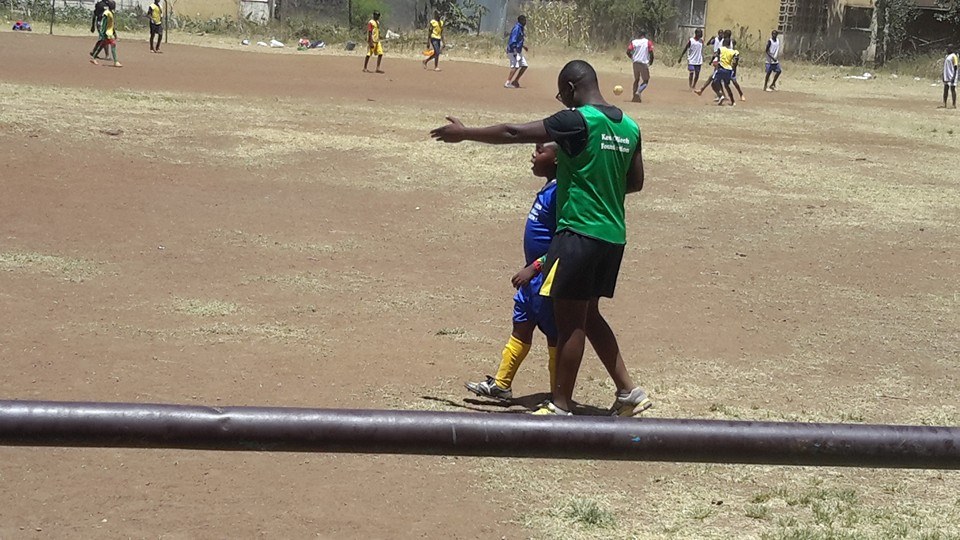
A very common practice in football all over world is the toss of the coin before kickoff. The winner of the toss gets to pick the side of the pitch while the loser gets to kickoff the match. Now, back in Kenya, there was a peculiar debate on which side the captain should take if he wins the toss, “…tuanze na kupanda ama kushukisha?” – loosely translated to: “should we start going up or down (the slope)?”. Usually teams preferred the former, reasoning that it would be easier to go down the slope in the second half as fatigue kicked in.
This situation brings to focus the state of football infrastructure in Kenya, the key component being the playing area. Apart from the slope, players had to contend with uneven playing surfaces, rocks, dust, etc. I remember in the field where I won my first trophy – Weche Cup Under 13 – there was a huge manhole right in the center of the pitch, which tackled a few players to the amusement of fans. On the positive though the creative minds, masters of the terrain, would on occasion play a quick one-two with the protruding manhole. It is indeed difficult to envision the sport flourishing, while the very basics are lacking. So what is the way forward?
Sustainable infrastructure
We need to develop football fields to acceptable standards in order to support the development of football. And I am not talking about the huge stadia of international standard, with huge sitting capacity. Reason being, having these huge stadia does not conform to the Value For Money principle of Economy, Efficiency and Effectiveness (3Es). My proposal goes down to the constituency level as a start and this perhaps is a good project that can be managed from the county budget, which has an allocation for sports. Why do I say so?
A few weeks I go I decided to go watch an amateur league match. As I sat there enjoying the match (and my beer), I noticed a signboard at one end of this modest sports facility, which read “Une Installation Ville de Genève” – A Geneva City facility.
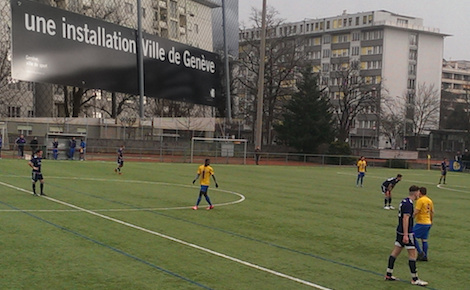
This facility consists of 2 football fields, a small restaurant and changing rooms. It is one of a number of such facilities spread around Geneva. I could not help but think such a model would work perfectly in Kenya; an idea I recently shared with a friend. She proposed selecting one primary school and one secondary school in each constituency, as a start, installing adequate sports facilities – minimum of 2 playing fields, with the focus being on the playing surface, which should be of high standard: level and well covered with quality grass. In total we would be looking at at least 400 good quality playing fields.
It was equally interesting to discover that our very own pennisetum clandestinum is one of the best grasses to use on playing fields. That is Kikuyu grass for those of us who do not play in the field of binomial nomenclature. For a moment I thought, “If the idea of installing these fields were to be taken up, then Kikuyu grass farming and laying the turf would be a lucrative business.”
Value For Money – A Case for Kikuyu Grass
A concept commonly referred to as 3Es – Economy, Efficiency and Effectiveness – should serve guide for in any strategic undertaking, in this case focusing on infrastructure.
Economy – minimising the cost of resources. Installing 2 Kikuyu grass playing fields in selected schools in each constituency is affordable and sustainable in the long-term.
Efficiency – performing tasks with reasonable effort. Kikuyu grass requires minimal lawn care apart from frequent mowing. It also grows and repairs quickly.
Effectiveness – the extent to which objectives are met. The objective is to have quality playing fields. This is important for the development of football talent, especially when instilling basics such as ball control and passing. Good pitches also reduce the risk of injury especially during the formative years of bone and muscle development.
In future articles or perhaps in another platform I hope to analyse actual infrastrategy projects, which can then be used as blueprints for similar projects.
*Actually when I started writing this article I honestly thought I had invented a new word, but Google disappointed me! In this context infrastrategy is portmanteau of the words “infrastructure” and “strategy”.
photo credit: Adam Foster Photography Wooden table Foosball via photopin (license)


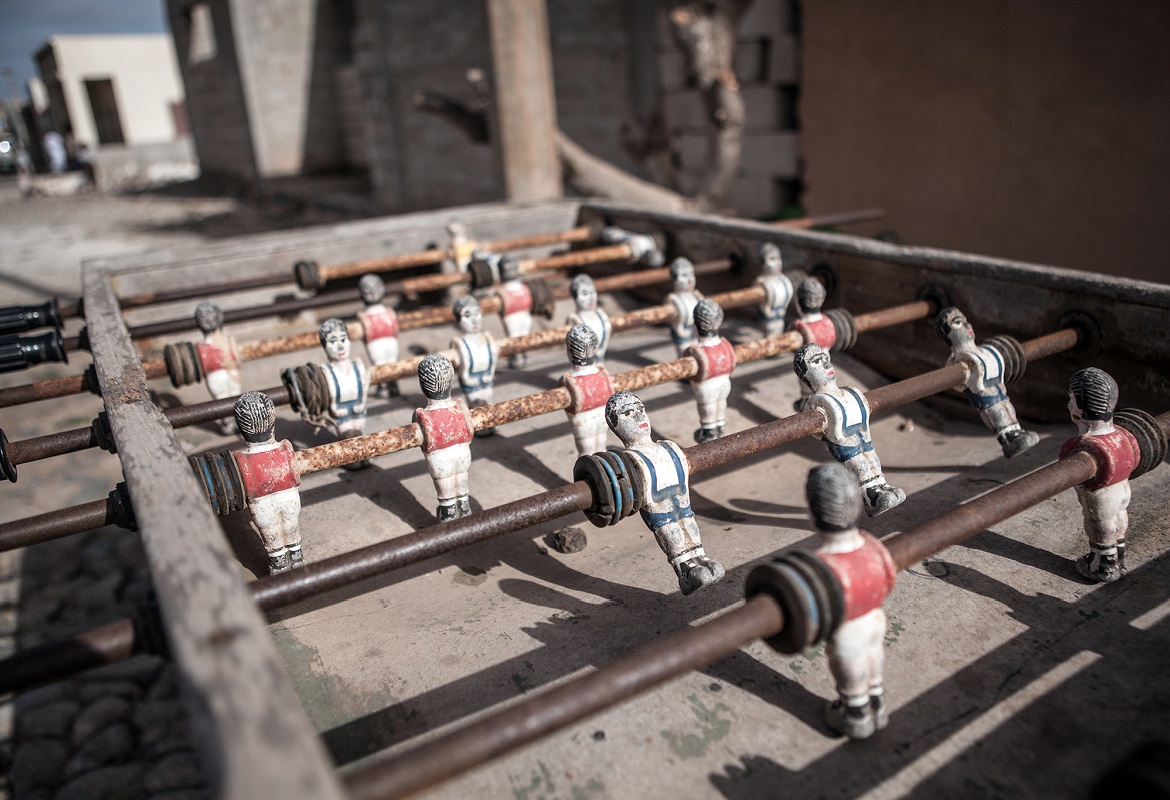
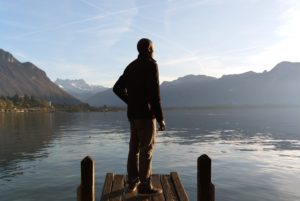

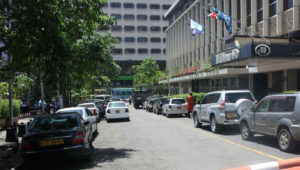
While looking at the 3E’s, do we consider that in Europe the kikuyu grass is planted in labs and large tracks of land. Who would think of planting grass for commercial purposes when land for subsistence is already a problem?
Odu, I think even in Kenya we can use green houses and similar technologies and there grass farming does not necessarily have to be a land intensive business. Also when when I mention the 3Es, it is mainly from the implementer’s perspective, in this case the county government. Farmers (Business people) are the suppliers.
Another great piece never a dull article. But from experience our primary school which shared a pitch with another primary school made it almost impossible for grass to grow. This was because at no particular time was the pitch without pupils on PE not to mention the senior Kangemi United trainings in the evening. Bearing the above in mind, me thinks investment on artificial turf is within the Economy concept as it is long lasting and maintenance free. The benefits are numerous since the Kupanda na kushuka theory which is prevalent almost on all surfaces I have played on will be vanquished, standards of playing surface will be attained not to mention encouraging the youngsters to commit to the game. In addition, the flood lights would be an additional magnet to the pitch for the players and spectators.
ION hope you are now familiar with the list of shame back home where I the name of Sam Nyamweya featured among the corrupt individuals that are supposed to step aside not resign to pave way for investigations. But characteristically in tandem with the Kenyan fashion the father of football has refused to step aside. Lets keep watch, maybe this could be the proverbial watershed 🙂
Nice article Brian, in Kenya we are not yet where Europe is in terms of infrastructure, strategy and even management and we have a culture of who will go first and maybe that explains the wonder of the wild beasts migration. People have great ideas but the biggest problem or challenge is actually implementation. Unnecessary bureaucracy or protocols and politics is a major barrier to innovation and change. It’s easier to implement an idea in your former school and use it as a benchmark my suggestion is with like minded guys you can easily have a turf pitch at upper hill and that can mark the start of the journey, in summary for there to be change in Kenyan football one needs a benchmark!! Remember Mathare United???they actually changed the face of football in Kenya!!
Thank you Salim. I agree that we are not at the same level as Europe which is why I insist on picking out whatever would work for us as opposed to wholesale adoption of European ‘infrastrategies’ and management styles. Indeed we have great ideas but have always fallen behind when it came to implementation. However this should not stop us from exchanging ideas and I am sure one day we will be able to implement some of this ideas. I am aware of certain initiatives which I hope highlight in future articles. These initiatives can help build the momentum we need for future work. Thank you for your ideas. Let’s keep the conversation going.
Hi CK, many thanks for your thoughtful comments. Lack of space is indeed a problem, in some areas more than others. Where space is not a problem I recommend 2 grass pitches to allow alternate use. It might be easy to turn to synthetic but I doubt synthetic pitches can withstand the amount of pressure you describe; and we well know it is very expensive to lay these synthetic pitches not mention the regular replacement. Perhaps this may only work in areas of low usage.
However, it is high time that established clubs like Kangemi United built their own facilities. And again they don’t have to be Emirates standard. Just enough to cater for their current fan base and flexible enough to accommodate growth. I will try to address club facilities in a future article.
Governance has indeed been a problem in football and I am following the happenings though I prefer to hold my comments for now. 😉
Way to go but the main problem with natural grass is exhaustion due to over-dependence and being over-utilised, key examples are Toyoyo and Kahawa grounds. Then the issue of maintenance and the unpredictable Kenyan weather. So to me natural grass will be a bigger challenge to maintain. But on a positive note the kikuyu grass is readily available in slopes of Mount Kenya and it has been harvested and used to good effect on both Kasarani and Kenya School of Monetary Studies grounds.
Thank you for your comments Evoh. It is true that most of our natural grass are exhausted due to overuse. However, as you point out maintenance is also key. That is why I suggest that we always have at least 2 fields per school so that as one ‘lays fallow’ the other is used. I think we will also need to improve on the management side of things. On the unpredictability of Kenyan weather I would say Kikuyu grass is the answer as you have rightly pointed out 2 cases in which this has worked well.
Good article bro. if only the government was serious about investing in infrastructure, this would happen. Its good that every county is renovating or constructing at least a stadium, the same effort should be lowered down to ‘mashinani’. Great ideas you have, now implementation is the issue. I pray NWYDA can use this example and do such a project. cheers
Thanks Jijoh for your comments. By targeting at least one secondary school and one primary school per constituency should have a good starts in efforts to reach ‘mashinani’ (grassroots). I hope to highlight the NWYDA project in a future article. Cheers